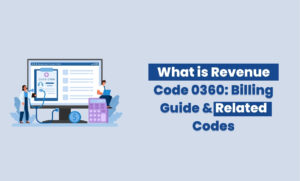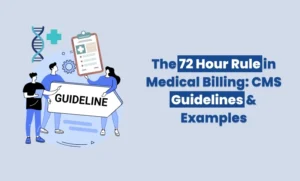Becoming a nurse practitioner is a major professional milestone, but the journey doesn’t stop at graduation or passing a certification exam. To fully step into your role, there’s one more crucial process you need to understand: credentialing.
Credentialing is what allows you to legally practice, bill for services, and gain privileges at hospitals or clinics. It’s the behind-the-scenes verification that confirms you’re qualified to provide care. Whether you’re a new NP or switching jobs, this step is non-negotiable.
In this guide, we’ll walk you through everything you need to know about NP credentialing, from what it is to how long it takes and what you need to complete it.
What Is Nurse Practitioner Credentialing?
Credentialing is the process of verifying a healthcare provider’s qualifications. For nurse practitioners, this means having your education, training, licensure, and certifications reviewed by employers, insurance payers, and healthcare institutions.
This process ensures that you meet national and state standards to practice safely and legally. It also enables you to be added to insurance panels, gain hospital privileges, and bill for your services using your own National Provider Identifier (NPI) number.
Credentialing is not a one-time event. It’s an ongoing process, especially when you change employers, add new certifications, or apply for new privileges.
What Are the Two Types of Certification for an NP?
There are two key certifications every NP must understand:
1. National Board Certification
Validates your clinical knowledge and specialty area. You must pass a standardized exam to receive this certification.
2. State Licensure
Legally authorizes you to practice as an NP in a specific state. While board certification proves your skills, licensure is what grants you the authority to use them.
You need both to be fully credentialed and practice independently.
Can You Work as an NP Before Being Credentialed?
You may be able to start orientation or participate in training sessions, but you can’t independently treat patients or bill insurance until you’re fully credentialed. In most cases, your official start date will depend on how quickly the credentialing process is completed.
Some organizations allow limited job functions under a supervising provider, but you’ll still need full credentialing before you can provide services under your own name or NPI number.
Who Issues Nursing Credentials?
Several organizations are involved in the NP credentialing process:
National Certification Bodies: These include the American Nurses Credentialing Center (ANCC), the American Academy of Nurse Practitioners Certification Board (AANPCB), and others, depending on your specialty.
State Boards of Nursing: These issue your nurse practitioner license and regulate your ability to practice within that state.
Centers for Medicare & Medicaid Services (CMS): Issues your NPI number, a unique ID required for billing.
Drug Enforcement Administration (DEA): Issues a DEA registration if you prescribe controlled substances.
Each of these steps plays a vital role in your ability to practice legally and independently.
Nurse Practitioner Credentialing Requirements
Now, let’s break down the main requirements you’ll need for credentialing as an NP:

1. Education
You must complete a graduate-level nurse practitioner program, typically a Master of Science in Nursing (MSN) or Doctor of Nursing Practice (DNP). The program should be accredited and include at least 500 supervised clinical hours in your specialty area.
2. National Certification
After graduating, you need to pass a national board certification exam. This validates your clinical knowledge and competency in your chosen specialty, such as Family Nurse Practitioner (FNP), Adult-Gerontology NP, Psychiatric-Mental Health NP, or others.
Certification must come from a recognized credentialing body like the ANCC or AANPCB. This certification is often the first step in securing state licensure.
3. State Licensure
You must apply for licensure in the state where you plan to practice. Requirements vary by state, but most include submission of transcripts, proof of certification, background checks, and possibly a collaborative agreement with a physician if the state doesn’t allow full practice authority.
4. NPI Number
The National Provider Identifier (NPI) is a 10-digit number issued by the Centers for Medicare & Medicaid Services (CMS). Every healthcare provider in the U.S. needs one to bill insurance companies and track services. Applying for an NPI is free and can usually be done online in under 20 minutes. While simple, it’s a critical step in the credentialing process.
5. DEA Registration (if needed)
If you plan to prescribe controlled substances, you’ll need to register with the Drug Enforcement Administration (DEA). This involves a separate application and fee, and the process typically takes a few weeks. Each state may have additional requirements, such as state-level controlled substance registration.
6. Additional Credentials
Depending on your role or setting, you may need other documents:
- Proof of malpractice insurance
- Continuing education transcripts
- Hospital privileging documentation
- State prescriptive authority forms
- Background checks and references
Be sure to ask your employer or credentialing coordinator for a full checklist. These details can vary by state and practice setting.
Key Organizations
Several national and state-level bodies oversee different parts of NP credentialing:
- ANCC: American Nurses Credentialing Center
- AANPCB: American Academy of Nurse Practitioners Certification Board
- AACN Certification Corporation: Focused on acute care and critical care NPs
- PNCB and NCC: For pediatric and neonatal specialties
- State Boards of Nursing: Licensure and regulatory oversight
- CMS: NPI number administration
- DEA: Controlled substance registration
Staying in good standing with these organizations is essential for ongoing practice.
Credentialing in Different States
Credentialing requirements for nurse practitioners (NPs) vary across the United States. While federal requirements like national certification and an NPI number are consistent, each state’s board of nursing sets its own rules for licensure, prescriptive authority, and scope of practice.
The American Association of Nurse Practitioners (AANP) categorizes states into three main practice authority levels:
Full Practice Authority: NPs can evaluate, diagnose, interpret tests, and manage treatment, including prescribing medications without physician oversight.
Reduced Practice: NPs have limited autonomy and must work with a physician for at least one element of patient care (e.g., prescribing).
Restricted Practice: NPs must work under the supervision, delegation, or management of a physician to provide patient care.
Let’s look at credentialing details in several major U.S. states across these categories:
1. California (Restricted Practice)
- Licensing Body: California Board of Registered Nursing (BRN)
- Special Requirements: NPs must have a supervising physician agreement to diagnose or prescribe.
- Recent Update: In 2023, California began phasing in AB 890, a law that will eventually allow NPs to practice independently under specific conditions after completing a transition period.
- Prescriptive Authority: Requires furnishing of a number and collaboration.
- Credentialing Tip: Ensure you meet physician collaboration documentation requirements, and track transition-to-practice hours if seeking independence.
2. Texas (Restricted Practice)
- Licensing Body: Texas Board of Nursing
- Special Requirements: Requires a written prescriptive authority agreement with a supervising physician.
- Hospital Privileging: Often complex due to supervision mandates; physician must be available for consultation.
- Credentialing Tip: Expect longer timelines due to necessary coordination with physicians and legal documentation.
3. New York (Reduced to Full Practice)
- Licensing Body: New York State Education Department (Office of Professions)
- Practice Level: Full Practice after 3,600 hours of supervised experience; reduced practice prior to that.
- Prescriptive Authority: Authorized; separate state registration required for controlled substances.
- Credentialing Tip: Track and document post-graduate practice hours thoroughly to qualify for full authority.
4. Florida (Restricted Practice)
- Licensing Body: Florida Board of Nursing
- Prescribing Rules: Requires physician collaboration except for select primary care NPs meeting strict criteria.
- 2020 Update: Allows some independent primary care practice if NPs meet extra experience and credentialing thresholds.
- Credentialing Tip: Review if your practice area qualifies for independent authority under the 2020 law.
5. Illinois (Reduced to Full Practice)*
- Licensing Body: Illinois Department of Financial & Professional Regulation
- Practice Level: Full Practice possible after 4,000 hours of supervised clinical experience and 250 hours of continuing education.
- Prescriptive Authority: Requires full practice license and additional training.
- Credentialing Tip: Documentation of supervised hours is critical; submit with transition-to-practice paperwork.
6. New Jersey (Reduced Practice)
- Licensing Body: New Jersey Board of Nursing
- Practice Model: Requires a joint protocol with a physician for prescribing medications.
- Pending Legislation: Ongoing efforts to grant full practice authority.
- Credentialing Tip: Ensure joint protocol documentation is up to date and submitted with initial licensure.
7. Georgia (Restricted Practice)
- Licensing Body: Georgia Board of Nursing
- Prescriptive Authority: Requires a nurse protocol agreement and approval from the Georgia Composite Medical Board.
- Supervision Requirement: Must have a delegating physician for certain tasks.
- Credentialing Tip: Coordination with both nursing and medical boards is essential for timely credentialing.
8. Massachusetts (Full Practice Authority)
- Licensing Body: Massachusetts Board of Registration in Nursing
- Practice Authority: Granted full practice status in 2021 for qualified NPs.
- Prescriptive Authority: Independent after completing a 2-year supervision transition.
- Credentialing Tip: After the supervised period, update your license to reflect full authority.
9. Colorado (Full Practice Authority)
- Licensing Body: Colorado Board of Nursing
- Transition to Practice: Requires 1,000 hours of mentorship with a physician or experienced NP before practicing independently.
- Prescriptive Authority: Must complete a prescriptive authority mentorship plan.
- Credentialing Tip: Plan your supervision and mentorship early to avoid delays in independent credentialing.
10. Arizona (Full Practice Authority)
- Licensing Body: Arizona State Board of Nursing
- Credentialing Features: One of the most NP-friendly states. No supervision or collaboration requirements.
- Prescriptive Authority: Full authority granted with licensure.
- Credentialing Tip: Efficient and quick processing compared to restrictive states.
SUMMARY TABLE OF PRACTICE AUTHORITY BY STATE

How Long Does Credentialing Take for an NP?
Credentialing is not instant. The full process typically takes 60 to 90 days, though it can vary based on your employer, location, and the responsiveness of references or state boards.
Here’s a rough breakdown:
- NPI: 1–2 days
- State license: 2–6 weeks
- National certification: Depends on exam schedule and processing time
- DEA registration: 2–4 weeks
- Insurance credentialing: 6–12 weeks
If you’re switching jobs, start early and stay organized. Delays can prevent you from billing and seeing patients. For more details or if you need expert guidance, get in touch with our NPP Credentialing Experts.
The Application Process
Here’s a general sequence most NPs follow:
- Complete an accredited NP program
- Pass your national certification exam
- Apply for state licensure
- Obtain your NPI number
- Apply for DEA registration (if needed)
- Submit documents to your employer or credentialing coordinator
- Undergo background checks, reference verifications, and NPDB reviews
- Await approval from insurance payers and hospitals
- Once credentialed, begin seeing patients and billing under your own credentials
What About Multiple Certifications or Specialties?
Some NPs hold more than one board certification, for example, Family NP and Psychiatric-Mental Health NP. While this broadens your scope of practice, it also requires separate credentialing for each specialty.
Make sure you:
- Submit documents for both certifications during credentialing
- Track continuing education and renewal dates for each one
- Communicate your role clearly to your employer and insurance payers
Multiple specialties may slow down the credentialing process, but they can significantly increase your career flexibility.
The Bottom Line
Credentialing is a vital step in your journey as a nurse practitioner. It’s what transforms your education and certification into the ability to legally practice, bill insurers, and earn hospital privileges. While the process can feel complex, understanding each requirement makes it manageable.
From securing your national certification to applying for licensure, obtaining an NPI, and enrolling with insurance payers, every step confirms your readiness to deliver care at the highest standards. The more organized and proactive you are, the smoother your credentialing experience will be.If you prefer expert help or want to avoid delays, consider working with a professional credentialing service. Companies like RevenueES specialize in NP credentialing services and can handle the entire process for you, saving time and helping you start your practice faster.





